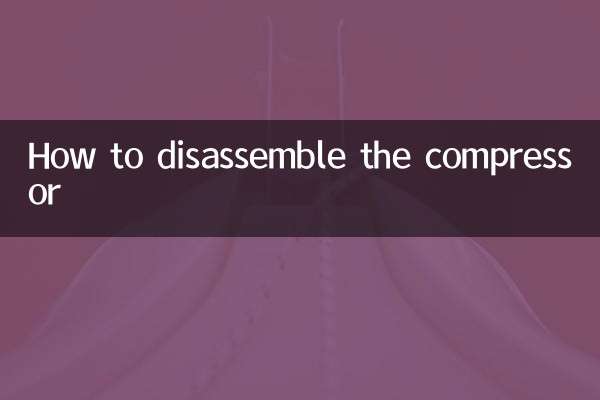How to replace the thermostat
With the increase in car ownership, vehicle repair and maintenance have become the focus of car owners. Recently, among the hot topics about car maintenance on the Internet, "thermostat replacement" has become one of the keywords with high search volume. This article will introduce in detail the function, replacement steps and precautions of the thermostat to help car owners better complete this maintenance task.
1. The function of thermostat

The thermostat is an important component in the automobile cooling system. Its main function is to regulate the flow path of the engine coolant to ensure that the engine operates within the optimal temperature range. When the engine temperature is low, the thermostat closes and the coolant circulates inside the engine to help quickly heat up; when the temperature reaches the set value, the thermostat opens and the coolant dissipates heat through the radiator to prevent the engine from overheating.
2. Preparations before replacing the thermostat
Before replacing the thermostat, you need to prepare the following tools and materials:
| Tools/Materials | quantity | Remark |
|---|---|---|
| new thermostat | 1 | Make sure the model matches the vehicle |
| antifreeze | Appropriate amount | It is recommended to use the original recommended model |
| wrench | 1 set | for removing bolts |
| screwdriver | 1 handful | For removing fasteners |
| sealant | 1 stick | For sealing thermostat interface |
3. Thermostat replacement steps
1.Drain coolant: First, drain the engine coolant. You can open the drain valve at the bottom of the water tank or loosen the drain pipe to ensure that the coolant is completely drained.
2.Remove old thermostat: Find the installation location of the thermostat (usually located on the upper part of the engine or near the water tank), use a wrench and screwdriver to remove the fixing bolts, and remove the old thermostat.
3.Clean the mounting surface: Use a clean cloth or scraper to clean the old sealant and residue on the thermostat mounting surface to ensure the mounting surface is flat and clean.
4.Install new thermostat: Apply an appropriate amount of sealant to the sealing surface of the new thermostat, then install it in place and tighten the fixing bolts.
5.Fill coolant: Refill the coolant to the specified level, start the engine and check for leaks.
4. Precautions
1. When replacing the thermostat, be sure to choose a model that matches the original vehicle to avoid malfunctions caused by inconsistent specifications.
2. During disassembly and installation, be careful not to damage surrounding pipelines and components.
3. After the replacement is completed, it is recommended to conduct a road test to observe whether the engine temperature is normal.
4. If you are not familiar with the operation, it is recommended to seek help from professional maintenance personnel to avoid unnecessary losses.
5. Frequently Asked Questions
| question | answer |
|---|---|
| What are the symptoms of a damaged thermostat? | The engine temperature is too high or too low, the warm air is not hot, the coolant circulation is abnormal, etc. |
| How often should the thermostat be replaced? | It is generally recommended to replace it every 50,000 kilometers or three years. Please refer to the vehicle maintenance manual for details. |
| Do I need to bleed the air after replacing the thermostat? | Yes, the air in the cooling system needs to be evacuated after replacement to avoid air blockage affecting the heat dissipation effect. |
Through the above steps and precautions, car owners can successfully complete the replacement of the thermostat. Regular inspection and replacement of the thermostat can effectively ensure the normal operation of the engine and extend the service life of the vehicle.

check the details

check the details